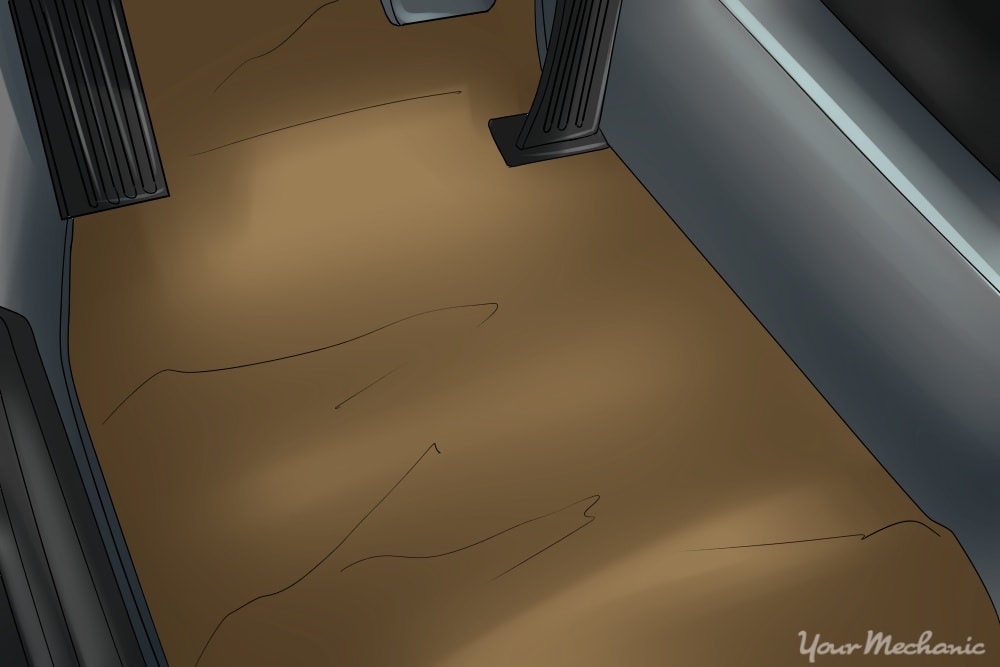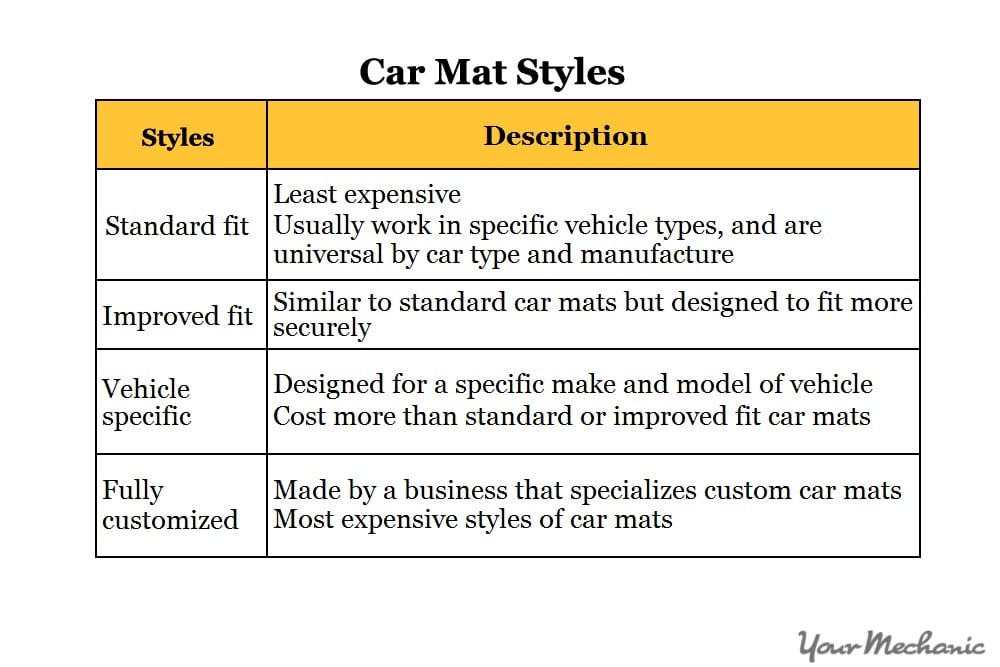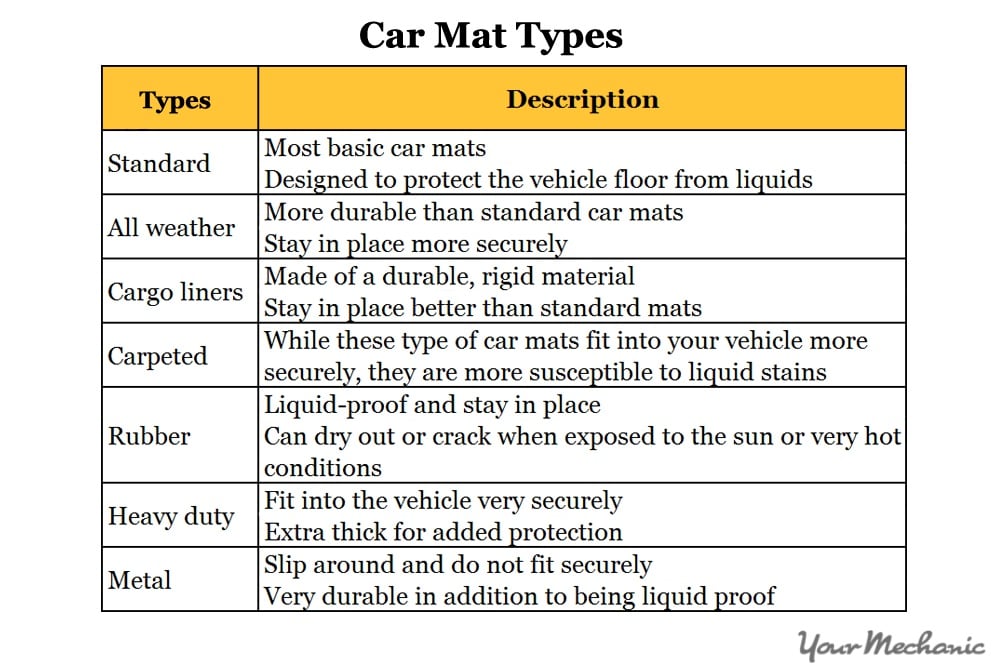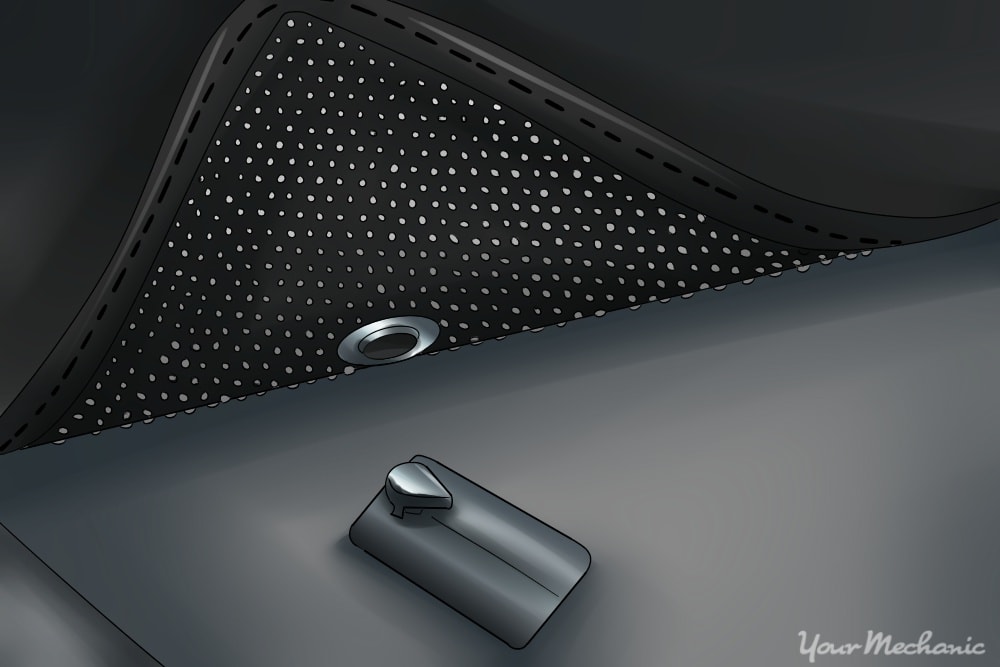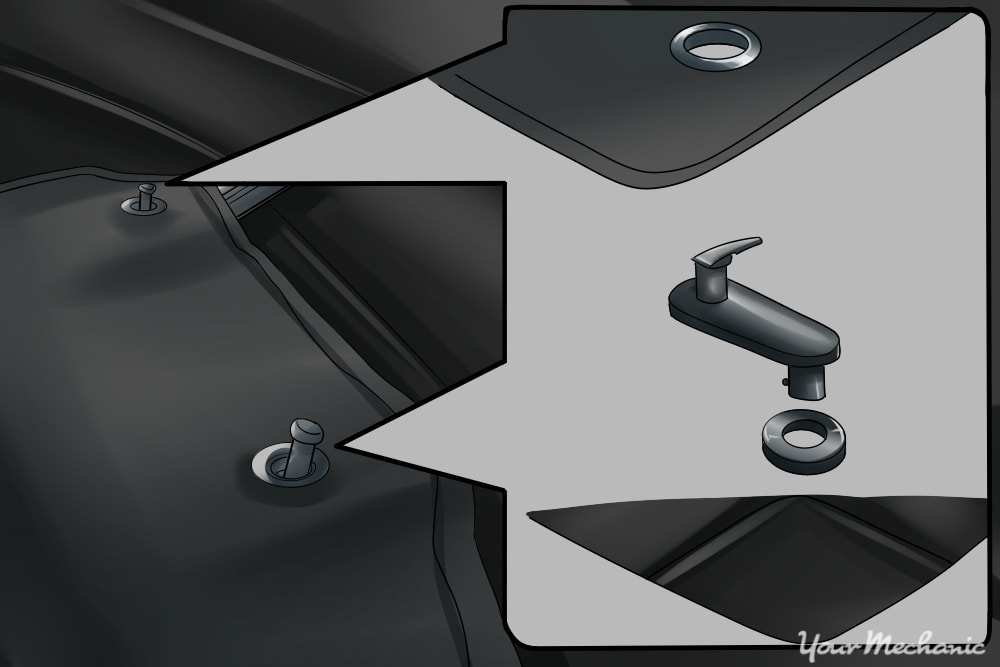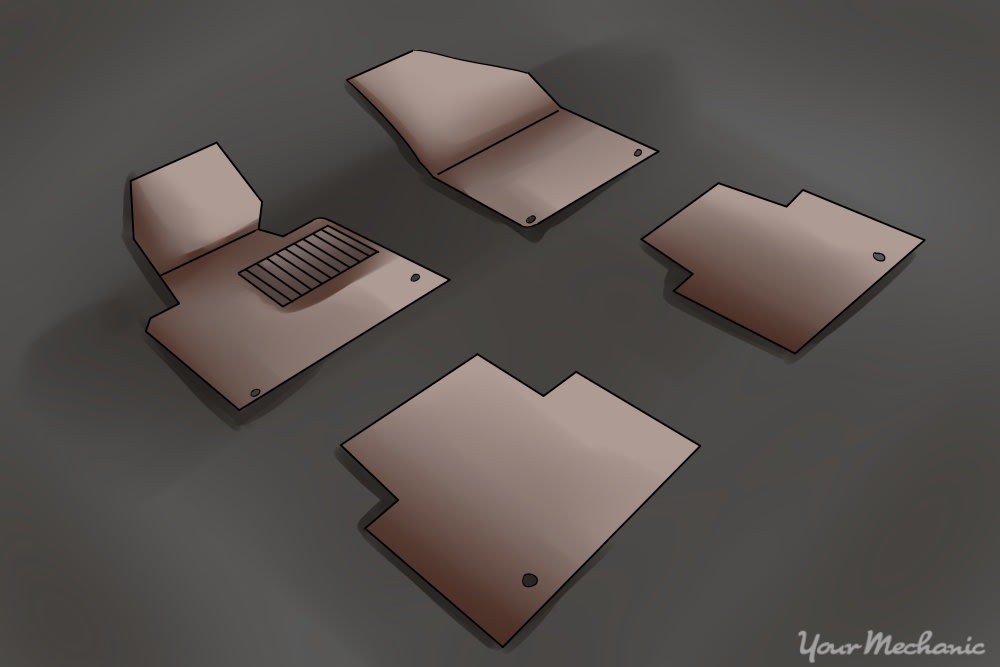

Car mats fit into the floorboard of a vehicle and help protect the carpeting beneath from dirt, debris, and moisture. Car mats come in a variety of different styles and sizes, so finding the right mats for your vehicle is important. By following some simple steps, you can have correctly fitting car mats installed quickly and easy.
Part 1 of 3: Measuring for fit
Materials Needed
- Heavy paper
- Measuring tape
- Paper and pencil
- Scissors
- Tape
When searching for car mats to put in your vehicle, you first need to measure for the proper size. If you plan on getting custom mats you need to make a template using heavy paper.
Step 1: Measure for size. Using a tape measure, measure the total floor area between the door jamb and the start of the center console.
Do the same for the back, measuring from the door jamb to the where the floor hump between the seats begins.
Also, measure the distance between the front seat and the front stopping point for the driver's and passenger's side front seats. For the back floorboard area, measure from the back of the front seats to the start of the rear seats.
- Tip: When measuring for the proper size, remember that you need to take into account any irregularities in the floor of your vehicle. Some common irregularities include obstructions and slants in the floor of the vehicle.
Step 2: Make a pattern out of paper. Draw your measurements onto some heavy paper.
After drawing the pattern, cut it out with scissors.
Make a pattern for each floor mat. Place the pattern in the car.
Step 3: Make any alterations. Alter the pattern as needed to improve the fit of the car mat.
Add or cut away the heavy paper as needed until the pattern covers the area you want.
Tape sections to the pattern if you need to add them.
When finished, the paper pattern should cover the entire area of floor in front of the seat without bending at obstructions or slants.
Step 4: Measure the final pattern. When completely finished, measure the pattern so that you know the size of the floor mats you need to buy.
Additionally, you can give the measurements to a professional so that they can make you custom floor mats that should fit the space you need them to exactly.
Part 2 of 3: Choose the style and type
After getting the proper measurements, it is time to shop for the car mats you want. When doing so keep in mind a few factors, including style, type, and the mat backing.
Step 1: Choose a style. The first thing you need to choose when it comes to car mats is the style you want.
This basically determines how good of a fit the car mats have.
Step 2: Choose a type. Next, you need to decide on the car mat type.
Car mat type plays a role in determining how susceptible to liquids they are and how well they stay in place once installed.
Step 3: Car mat backing. The final consideration when picking a car mat is the type of backing it uses.
Flat backed car mats use a non-slip coating to help keep it in place.
Another backing type is the gripper backed car mats. More effective than coated mats, the nubs on these types of car mats tend to cause wear on your vehicle's flooring.
Part 3 of 3: Car mat installation
Materials Needed
- Car carpet cleaner
- Microfiber towels
- Vacuum cleaner
Once you have measured for size and found the car mats you want, it is time to install them. Proper installation of your car mats ensure that you have a good fit
Step 1: Clean the vehicle. Before placing the car mats, clean the area where you plan on placing the car mats.
Take out the old car mats.
Vacuum the area where you plan on placing the new mats.
- Note: You should also clean up any stains or heavy soiling before placing the new car mats. Also, make sure the area is dry before placing the mats in the vehicle.
Step 2: Clean the car mats. Prior to installing them, make sure that the car mats are clean.
This usually involves removing any dirt, debris, or other materials from the car mats before placing them in your vehicle.
Step 3: Place the mats. Fit the mats into place, making adjustments as needed.
This includes determining which mat goes where, though some might have labels advising you of such.
If the vehicle has factory retention posts, latch the car mats into place. This is usually only on mats specific to the car manufacturer or vehicle model.
Work around the perimeter of each mat, making sure it is securely in place before moving on to the next car mat.
Make sure you can work both the gas and brake without the mat getting in the way. Also adjust the seats to make sure the front mats do not interfere with seat motion.
Finding and fitting car mats is easy when you follow some simple instructions. The hardest part is getting the correct size mats. By making a paper template that fits the area you want exactly, you can get the exact dimensions you need.



